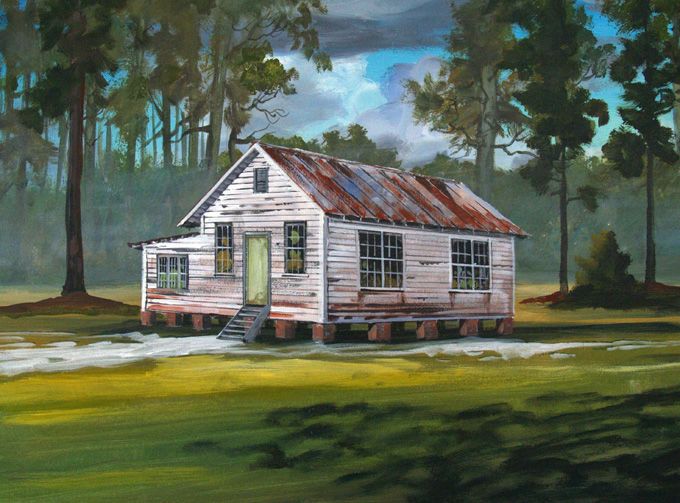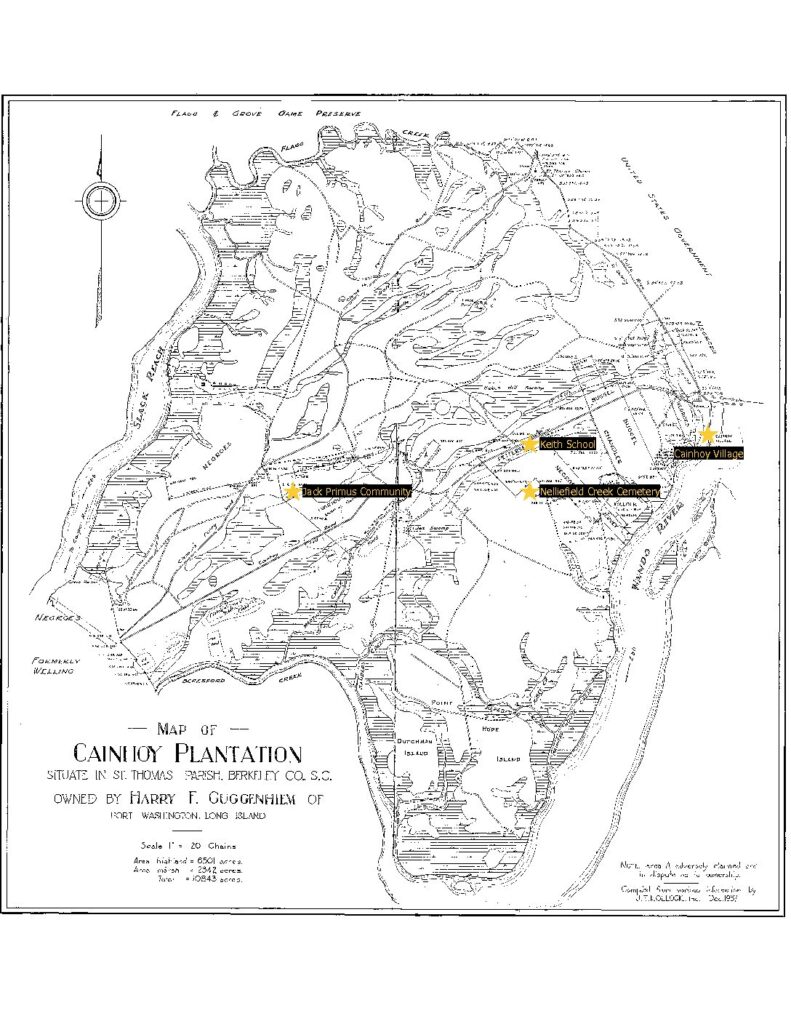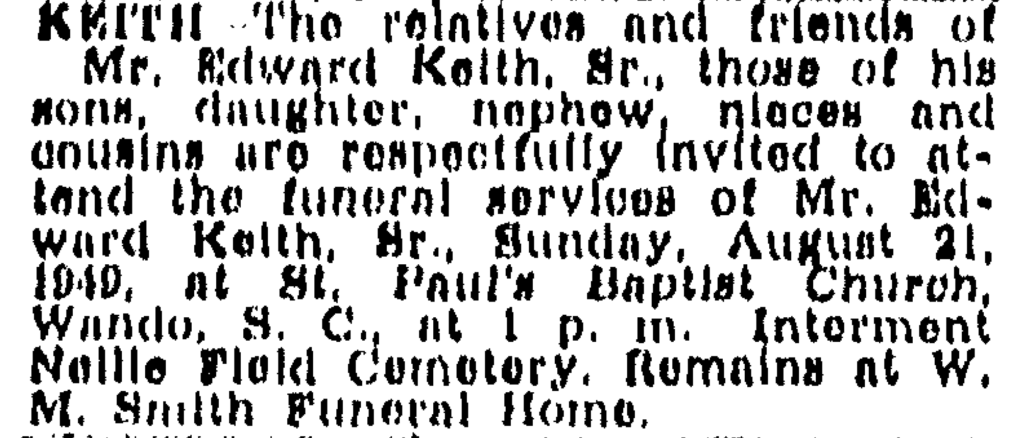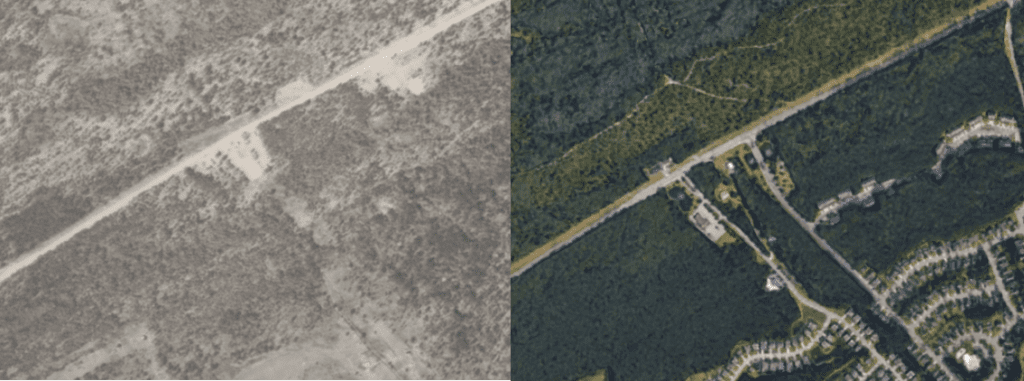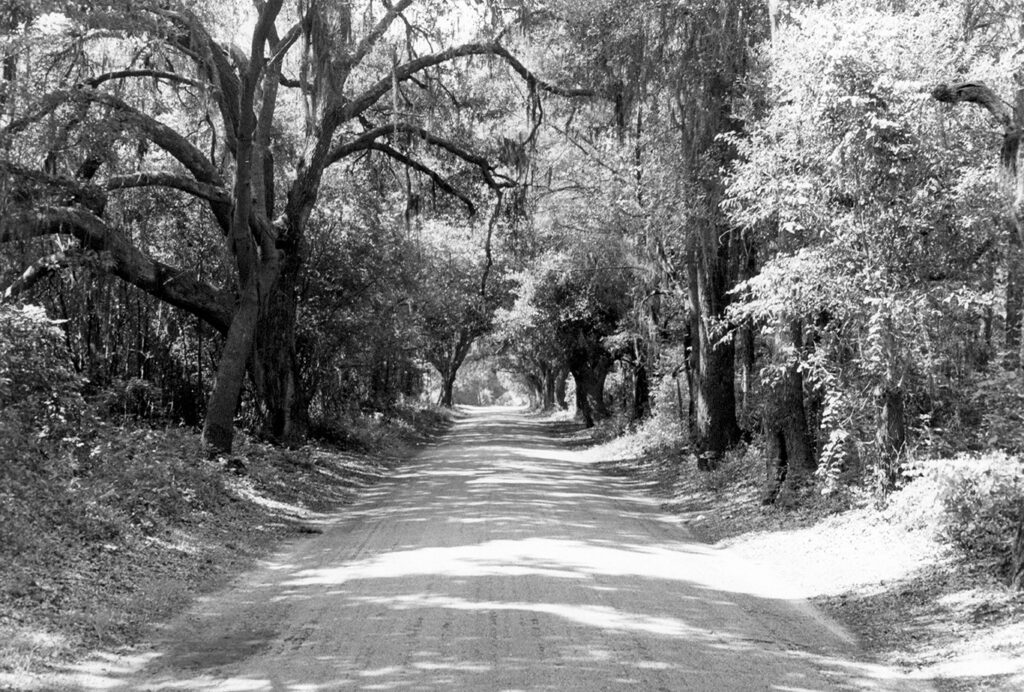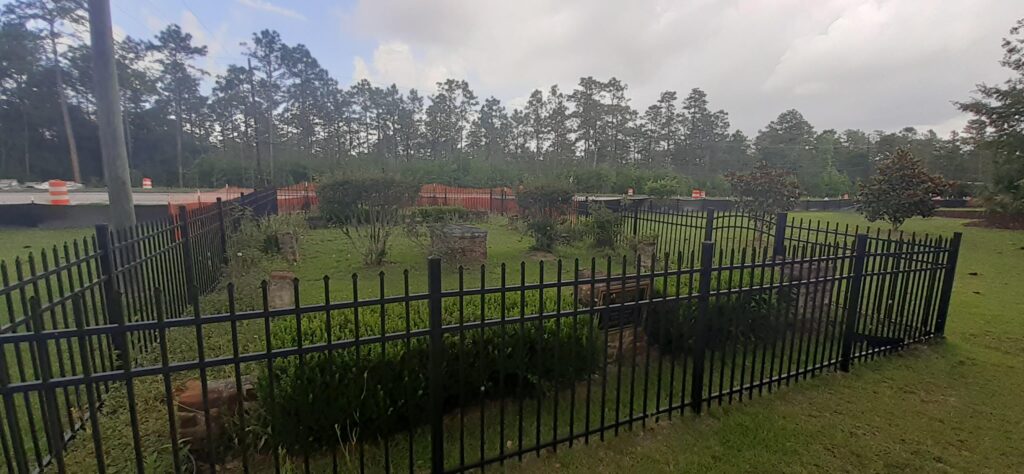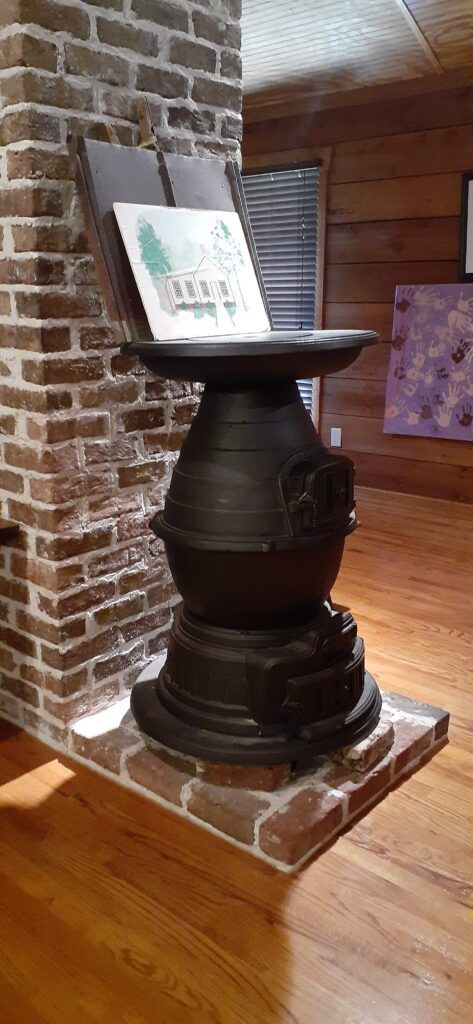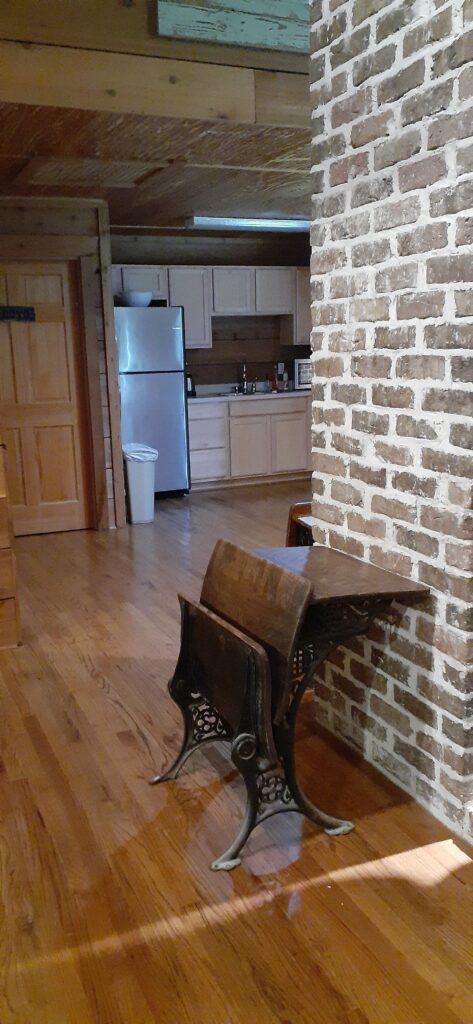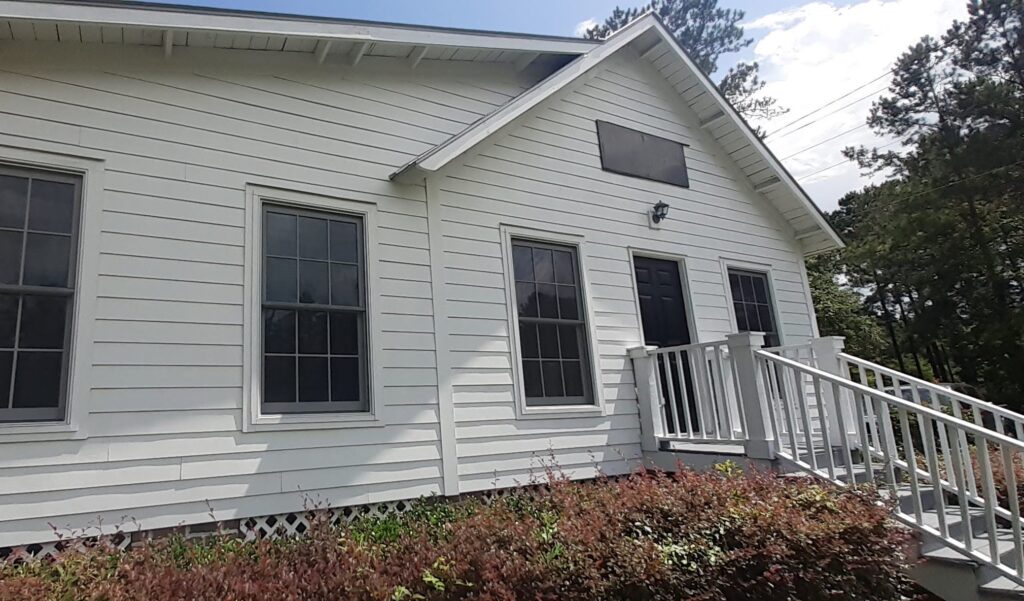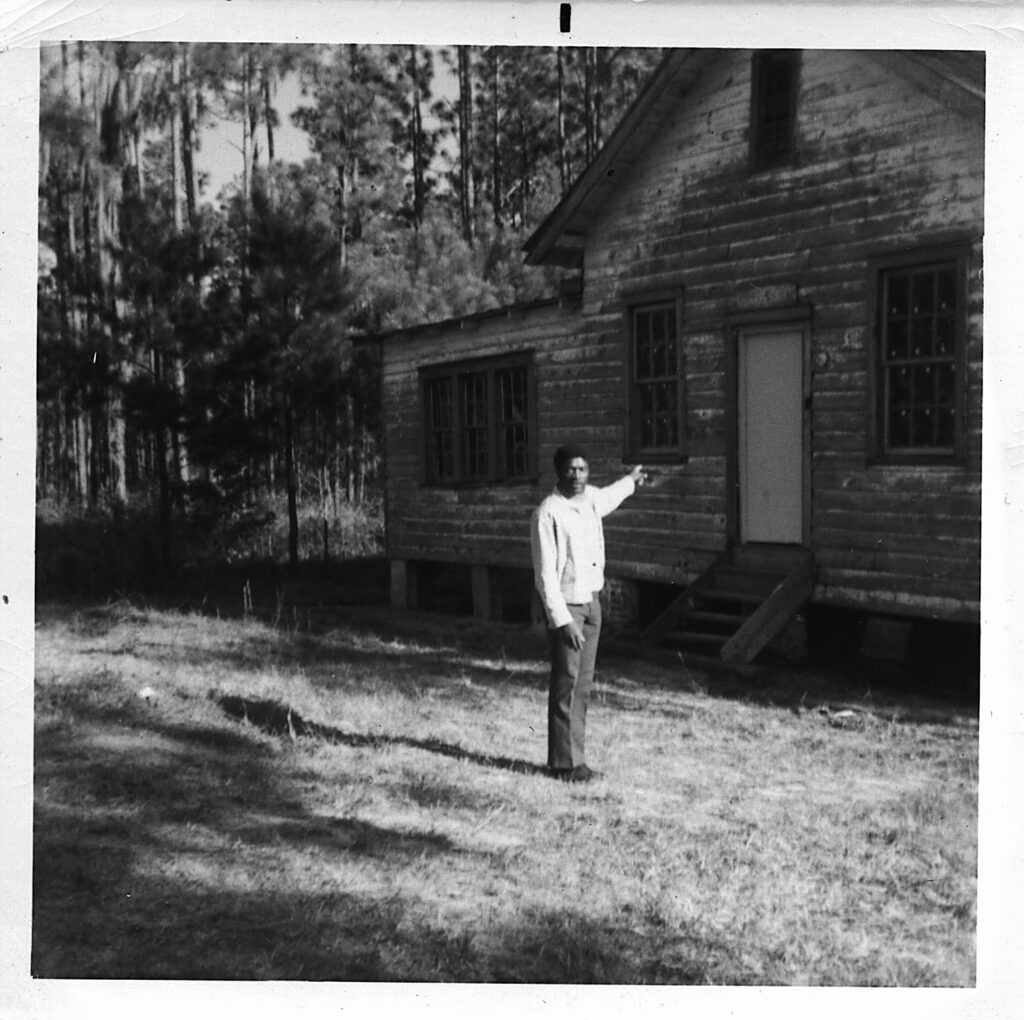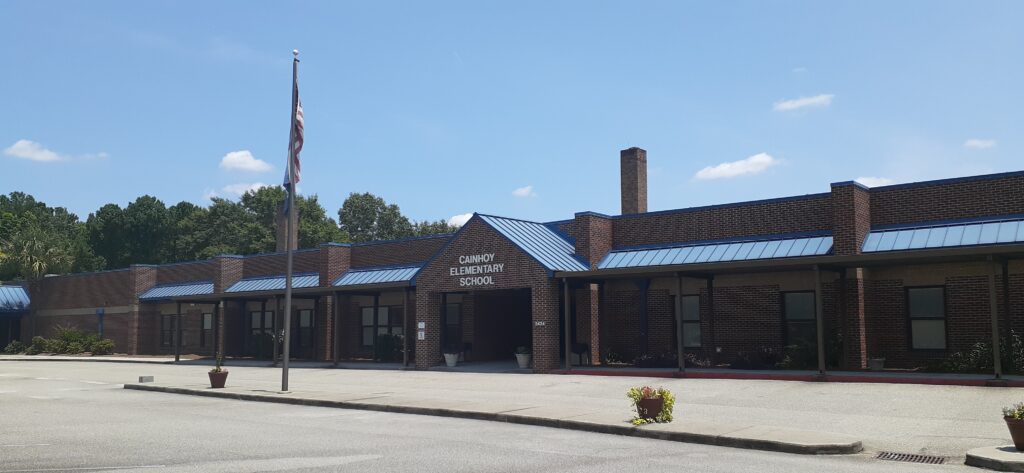The Keith School Museum, built in 2006 as a reconstruction of the original Keith School, is a one-story wood-frame building that sits on approximately one acre of land at 1509 Clements Ferry Road on the Cainhoy peninsula.[1] The original school building was constructed circa 1926 by and for residents of the rural, African American settlement communities established after the Civil War on lands near the former Hartford Plantation, later renamed Cainhoy Plantation.[2] The school provided educational opportunity to children from the Cainhoy Village area and Jack Primus communities for 30 years at the height of Jim Crow segregation and served as an important space for the development of community culture and identity. The original Keith School building was heavily damaged by Hurricane Hugo in 1989 and ultimately demolished in the early 2000s.[3] Today, remnants of the brick foundation outline the footprint of the historic school in front of the reconstructed museum.
Throughout its history as an educational center, museum, and gathering space, the Keith School site has consistently represented the community’s collective commitment to education and the future of its children. Before the Keith School, some children from local settlement communities walked long distances to the nearest school, while others were educated informally by relatives.[4] Under discriminatory, Jim Crow era legislation, the state provided minimal funding for Black schools, only supplying the cost of teacher salaries, which required Black communities to work together to independently build and sustain spaces for education.[5]
In the 1920s, Jack Primus Community member, farmer, and carpenter Edward Keith (1885-1949) donated a tract of land for the construction of a schoolhouse to meet the needs of local, African American children. Born only 20 years after the end of slavery, Keith saw education as an important source of empowerment and upward mobility for African Americans in the 20th century, and often told his nine children, “Education is the path.”[6] In addition to the donated land, community members joined together to purchase and contribute materials to build the Keith School. [7] To fund the project, some regularly made the lengthy trek to and from Charleston to sell goods like eggs and fish.[8] Others, like Keith, were skilled craftsmen, who worked collaboratively to construct the Keith School with donated materials. [9] The schoolhouse welcomed its first class of students in 1926, and was originally one room and an outhouse, until a two-room addition was added in 1943.[10]
The first teachers traveled from Charleston to Cainhoy by rowboat and were given room and board by the Keith family.[11] The school had no electricity or plumbing, and students used a wood-burning stove, oil lamps, and an outhouse during their school day.[12] The school curriculum consisted of basic reading, writing, and arithmetic, and many students dropped out of school by age twelve or thirteen to work alongside their families.[13]
School founder Edward Keith died in August 1949 at age 65, about five years after the death of his wife Rebecca.[14] His funeral was held at St. Paul’s Church, which sits adjacent to the Keith School, and he was buried in Nellie Field Cemetery (or Nelliefield Creek Cemetery) less than a mile south of the school.
The Keith School closed in 1956 when Berkeley County School District opened Cainhoy Elementary and High School as an “equalization school” to provide a “separate but equal” educational facility for local Black students in lieu of integration.[15] While this transition provided former Keith School students with access to electricity, interior plumbing, County-provided meals, and college-educated teachers, equalization schools across the state were woefully under-resourced in comparison to white schools.[16] Public schools in South Carolina were not integrated until 1963, nearly a decade after the Brown vs. Board of Education decision made segregation unconstitutional.[17]
Following the closure of the Keith School in the 1950s, the schoolhouse continued to be used for dances and community fundraisers. Even after the building was heavily damaged by Hurricane Hugo, the Keith School remained significant to the cultural heritage of the settlement communities in the area, and local advocates fought for its protection when proposed suburban development threatened it in the early 2000s.[18]
In 2006, stakeholders negotiated with developers to preserve the site and secure a financial contribution toward the construction of the Keith School Museum, which opened that same year and now serves as an important space for community events and gatherings. By continuing to equip the community to better understand and protect their unique cultural heritage, the museum honors the legacy of the visionary citizens who gave of their time, talent, and treasure to provide access to education in the face of racial injustice.
CLICK THE IMAGES BELOW TO EXPLORE THE KEITH SCHOOL GALLERY.
[1] Herb Frazier and John W. Jones, “Behind God’s Back”: Gullah Memories: Cainhoy, Wando, Huger, Daniel Island, St. Thomas Island, South Carolina, 1st ed. (Charleston, S.C: Evening Post Books, 2011), 159.
[2] Harriette Kershaw Leiding, Historic Houses of South Carolina (Philadelphia: J.B. Lippincott, 1921), 187.
[3] Elizabeth Bush, “Daughter of Keith School Founder Visits Site’s Museum for the First Time,” Daniel Island News (Daniel Island, SC, August 7, 2019), sec. News, accessed June 3, 2021, http://thedanielislandnews.com/news/daughter-keith-school-founder-visits-sites-museum-first-time.
[4] Herb Frazier and John W. Jones, “Behind God’s Back”: Gullah Memories: Cainhoy, Wando, Huger, Daniel Island, St. Thomas Island, South Carolina; Elizabeth Bush, “Daughter of Keith School Founder Visits Site’s Museum for the First Time.”
[5] Barbara W. Vaughn, Groundbreaking for Huger-Wando Community Center on Old Keith School Site, Press Release (Charleston, SC: City of Charleston, January 17, 2006).; Elizabeth Bush, “Daughter of Keith School Founder Visits Site’s Museum for the First Time.”
[6] United States of America, Bureau of the Census, “Fourteenth Census of the United States, 1920” (Ancestry.com, 1920), Microfilm T624, National Archives and Records Administration, accessed June 2, 2021; United States of America, Bureau of the Census, “Fifteenth Census of the United States, 1930” (Ancestry.com, 1930), Microfilm T626, National Archives and Records Administration, accessed June 2, 2021; Herb Frazier and John W. Jones, “Behind God’s Back”: Gullah Memories: Cainhoy, Wando, Huger, Daniel Island, St. Thomas Island, South Carolina.
[7] Elizabeth Bush, “Daughter of Keith School Founder Visits Site’s Museum for the First Time”; Division of Vital Statistics, State Board of Health, State of South Carolina, “South Carolina, U.S., Death Records, 1821-1969” (Ancestry.com, August 17, 1949), South Carolina Department of Archives and History, accessed June 2, 2021.
[8] Vaughn, Groundbreaking for Huger-Wando Community Center on Old Keith School Site; Elizabeth Bush, “Daughter of Keith School Founder Visits Site’s Museum for the First Time.”
[9] Herb Frazier and John W. Jones, “Behind God’s Back”: Gullah Memories: Cainhoy, Wando, Huger, Daniel Island, St. Thomas Island; United States of America, Bureau of the Census, “Fourteenth Census of the United States, 1920” (Ancestry.com, 1920), Microfilm T624, National Archives and Records Administration, accessed June 2, 2021; United States of America, Bureau of the Census, “Fifteenth Census of the United States, 1930” (Ancestry.com, 1930), Microfilm T626, National Archives and Records Administration, accessed June 2, 2021.
[10] Herb Frazier and John W. Jones, “Behind God’s Back”: Gullah Memories: Cainhoy, Wando, Huger, Daniel Island, St. Thomas Island, South Carolina; Jessica Johnson, “Keith School Museum in Cainhoy Gets Donations from Book Proceeds,” The Post and Courier (Charleston, South Carolina, March 27, 2008).
[11] Ibid.
[12] Jessica Johnson, “Keith School Museum in Cainhoy Gets Donations from Book Proceeds”; David Slade, “Community Center to Rise from Remains of School Site.”
[13] Fred Lincoln, “Keith School Site Visit,” interview by Danielle Cox, Anna-Catherine Carroll, and Erin Minnigan, June 9, 2021.
[14] Division of Vital Statistics, State Board of Health, State of South Carolina, “South Carolina, U.S., Death Records, 1821-1969” (Ancestry.com, August 17, 1949), South Carolina death records, South Carolina Department of Archives and History, accessed June 2, 2021; “Rebecca Keith Obituary,” Evening Post (Charleston, South Carolina, December 30, 1944).
[15] Jon Hale, Clerc Cooper, and Millicent Brown, “Somebody Had To Do It: First Children in School Desegregation,” Online Exhibit, Lowcountry Digital Library, n.d., accessed June 24, 2021, https://ldhi.library.cofc.edu/exhibits/show/somebody_had_to_do_it/struggle_for_equal_ed/delaying_desegregation.
[16] U.S. Department of the Interior. (2021, February 23). South Carolina: South Carolina Equalization Schools (U.S. National Park Service). National Parks Service. Retrieved March 30, 2023, from https://www.nps.gov/articles/000/south-carolina-south-carolina-equalization-schools.htm.
[17] Jon Hale, Clerc Cooper, and Millicent Brown, “Somebody Had To Do It: First Children in School Desegregation.”
[18] David Slade, “Community Center to Rise from Remains of School Site.”

